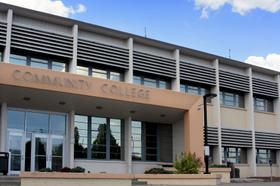In a proactive approach to employee Massachusetts residents, community colleges are partnering with a number of entities to bring casino training to their campuses. The new addition will be in preparation for the construction of at least one casino in the western region of the state. Training will be offered in all aspects of casino operations, from entry-level jobs all the way to management positions.
This video offers an overview of the casino dealer course at Mt. San Jacinto Community College.
Collaboration Involves Multiple Partners
The new training collaboration brings a number of entities in the state together, including the Massachusetts Casino Careers Training Institute (a consortium of 15 community colleges and some four-year schools in the state), Penn National Gaming, MGM Resorts International, Western Massachusetts Development Associates, and Mohegan Sun. MGM, Penn, and Mohegan Sun are all vying to put a casino in the state. According to state law, as many as three new casinos could be built in the state, although specific plans and locations are still pending.
Despite the uncertain plans for the casino additions, plans to train up workers for the industry are already being put into place. Mass Live reports that the college consortium and casino developers have signed worker training agreements with four prospective casino developers, and also have a signed agreement with the Massachusetts Gaming Commission. It is this latter organization that will be responsible






















